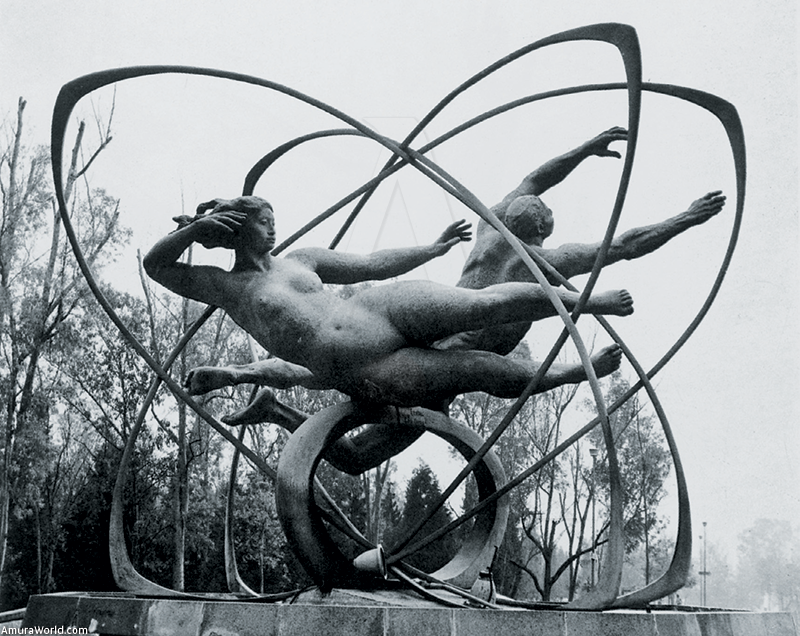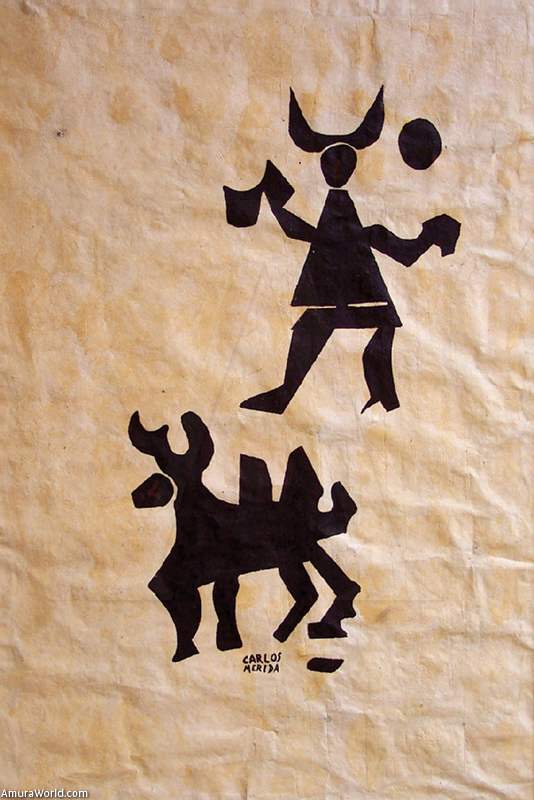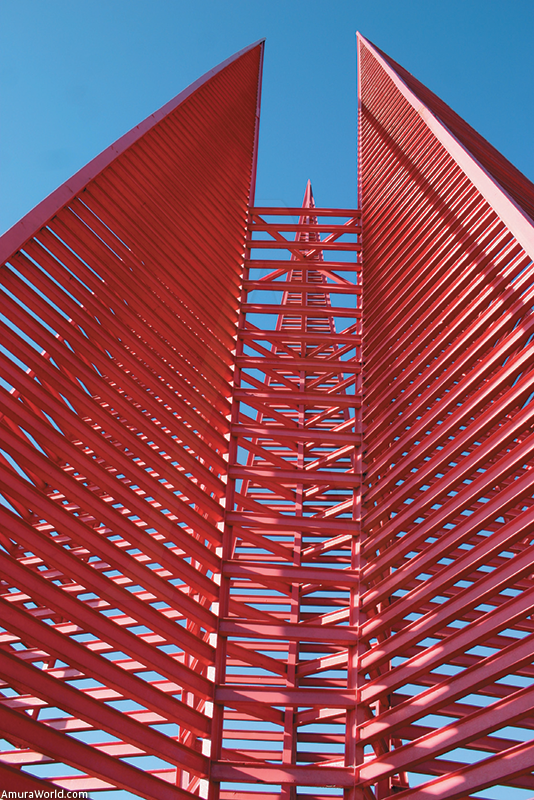The list of foreign artists who have come to Mexico to study, perfect their technique or broaden their knowledge is important and long. Occasionally, some of them succumbed to their destiny and settled here permanently. Mexico attracted these artists because of its schools, customs, climate and possibilities of economic development in relation to other Latin American countries during the 20th century. These are the main reasons why Mexican cities received the benefit of the influence and talent of artists from many corners of the world.
It is important to mention that many came and stayed because of Mexico’s proximity to the United States. Although there is some truth in this, it is also false. Most of the time it is a mirage. This is not the case of the masters that I will mention. They were conquered by what they found in this country or they were straying from dictatorships, living their exile from another perspective.
Let us remember the “niños de Morelia” (children of Morelia), orphans who arrived here fleeing from the Spanish Civil War and who settled in the capital of Michoacán. Among them were children who developed talents in different artistic areas. One of them was Julián Martínez, a sculptor who created more than a hundred works of art that adorn many of Mexico’s state capitals and municipalities. One of his most important sculptures is the monument of General Emiliano Zapata, on Paseo Tollocan, on the outskirts of Toluca, State of Mexico. It is beautiful and, because of its size, one of the biggest equestrian sculptures on the continent.
And what about Remedios Varo? She was born in Catalonia, Spain in 1913and lived in Mexico from 1942 to the day of her death in 1953. This artist’s unique surrealism enriched the country’s collection. Part of her work is exhibited in the Museo de Arte Moderno (Museum of Modern Art) in Mexico City.
In the early 20s Jean Charlot arrived here with his mother. He found refuge with the painter Alfredo Ramos Martínez who had been the director of the Academia de San Carlos, a prestigious art school. Shortly thereafter, he would give classes at the Escuela al Aire Libre of Coyoacán which, at the time, was directed by Fernando Leal, one of the founding members of the muralist movement. While he was in the country he painted a mural in the Escuela Nacional Preparatoria (National High School)—today’s Museo de San Idelfonso, in the historic downtown area of the nation’s capital—entitled “Masacre en el Templo Mayor” (Massacre at the Templo Mayor) where he used experimental techniques that helped recover the fresco technique. Charlot died in Hawaii in 1979.
Another case is that of the painter Pablo O’Higgins. Born in 1904 in Utah, U.S.A., in 1923 he came to “visit his neighbors”, as he used to say. For a time he lived in the homes of miners in the state of Durango, where he became aware of the country’s social problems. In that same decade he worked as an assistant to Diego Rivera, thanks to his facility for speaking Spanish and his artistic talent. Shortly thereafter, he was allowed to create his own murals and smaller paintings, like those he did in the Talleres Gráficos de la Nación (National Graphics Workshops).
Other artists who left their mark are Carlos Mérida (Guatemala 1891-1984), Francisco Zúñiga (Costa Rica 1913-2000) and Matías Goeritz (Danzig, Germany 1915-1990). Undoubtedly, they play an important role in the history of art. What can we say about Mérida’s paintings that depict the folklore of Mexico’s ethnic cultures as well as his geometric art with its wonderful use of color that only he could do? He was a pioneer in modern art and left a vast collection that has enriched both public and private collections. Unfortunately, some of his public work was destroyed during the 1985 quakes that affected Mexico City, for example those that adorned the Juárez housing project. Even so, we can still admire his last mural, in blue and white mosaics, at the UNAM (National Autonomous University) Cultural Center on Insurgentes Aveneu, Mexico City.
In Zúñiga ‘s case, he masterfully rescued and recovered the value of indigenous pride, especially in the area of the Isthmus of Tehuantepec in Oaxaca, where he showed the strength and dignity of the Tehuanas (the local women). He showed poverty as the richness that flows from human beings and not simply their economic condition. For this he was recognized as a master of contemporary Hispano-American sculpture. One has only to see his work to realize why, especially the fountains in the first section of Chapultepec park in Mexico City: “Física nuclear” (Nuclear Physics) and “Muchachas corriendo” (Girls Running), which he completed in 1964.
The case of Matías Goeritz, who represents a dividing point in contemporary sculpture, is completely different. In 1957 he and the architect Luis Barragán created the famous Torres de Satélite, powerful concrete sculptures that stand at the northern entrance to Mexico City. He was also responsible, in 1968, for coordinating the “Ruta de la Amistad” (Friendship Route), sculptures done by artists from different countries to commemorate the 19th Summer Olympics held in Mexico. They are displayed at 22 points along Adolfo López Mateos Boulevard on the south side of Mexico City.
There are also artists who have lived here during important periods of their lives and who enjoy international fame. They include the Colombians Rodrigo Arenas Betancourt (1919), Omar Rayo (1928) and Fernando Botero (1932). The latter lived in Mexico in the 50s when he was a young, curious student.
Oswaldo Sagástegui, born in Llata, Huanuco, Peru, in addition to being a painter with 25 years of experience, was the political cartoonist for the Excelsior newspaper. For this he was awarded the Premio Nacional de Periodismo (National Journalism Award) and to date, we still admire his work.
We must also mention Leonora Carrington (1917), that ingenious Englishwoman, who was a key element in Mexico’s surrealist movement as well as the Canadian Arnold Belkin (1930-1992), who lived in Mexico since 1948 and left many important murals in the Universidad Autónoma Metropolitana (Metropolitan Autonomous University). It is almost impossible to name all the artists who have lived in this country since the time of the Independence till now but we wanted to mention a few.
We also want to remember some of the more important critics and investigators like Juan Acha (Peru 1916-1995). He lived in Mexico for a significant part of his life, leaving more than 20 books about art—real sociological and aesthetic works—as well as hundreds of essays about the works of artists in their catalogues. A university professor until the end, this prolific intellectual passed away ten years ago.
Text: Miguel Peraza ± Photo: Archivo







